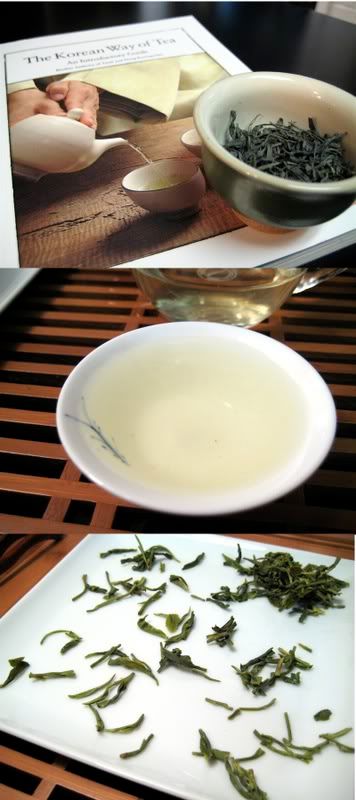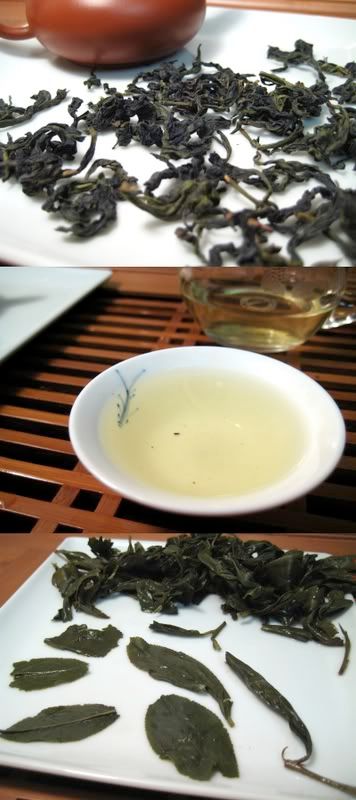Most importantly, thanks to all my loyal readers! I would not have the motivation to keep this blog up if it weren't for all your comments and emails. Here's to another great year!
 Class: Oolong
Class: OolongOrigin: Fujian province, China
Year: ?
Vendor: Red Blossom Tea Company (Product page)
Price: $13.50 (4 oz) / $4.00 (1 oz)
Today's tasting notes are on Red Blossom Tea Company's "Fire Kuan Yin," a roasted Tie Guan Yin. First, thanks to Xine from Adagio, who gave me this tea (and many others) as part of a secret santa event between a few TeaChatters. You chose well, Xine!
I had assumed, because of the word "Fire," that this would be a high-roast TGY, but it is not. The product description even says so, but in case you don't read vendor descriptions anymore, like myself, know that this tea only has a low-medium roast. Regardless, it's pretty good.
The dry leaf is fairly green, indicative of a low or medium-strength roast. The leaf pellets are also very small, which I hear is a good thing. The roast brings out some nice aromas though– mostly toasted grains, but also pear, and a touch of cocoa.
I brewed this in another Christmas present– a new Yixing pot. It's about 3 oz/ 90mL, and is from silkroadtrade on ebay. I have decided to use it for roasted, non-yancha oolongs. The pour is decently fast, around 7 seconds. Anyway, I brewed this tea with 4g of leaf, boiling water, and 30+ second infusions.
The flavor is light, sweet, and grainy (flavor, not texture). It has a nice feel to it– it is smooth, moderately thick, and slightly oily on the lips. This tea also has a decent hui gan (lingering, sweet aftertaste) and a cool throat-feel. There is even a bit of pear aftertaste, though not much.
Overall, I'd have to say this was a good tea, worth buying. Also, as it is roasted, the fact that there is no harvest year given doesn't bother me so much– I know this tea will last a few years, and, if anything, just get better. Thanks again Xine!




